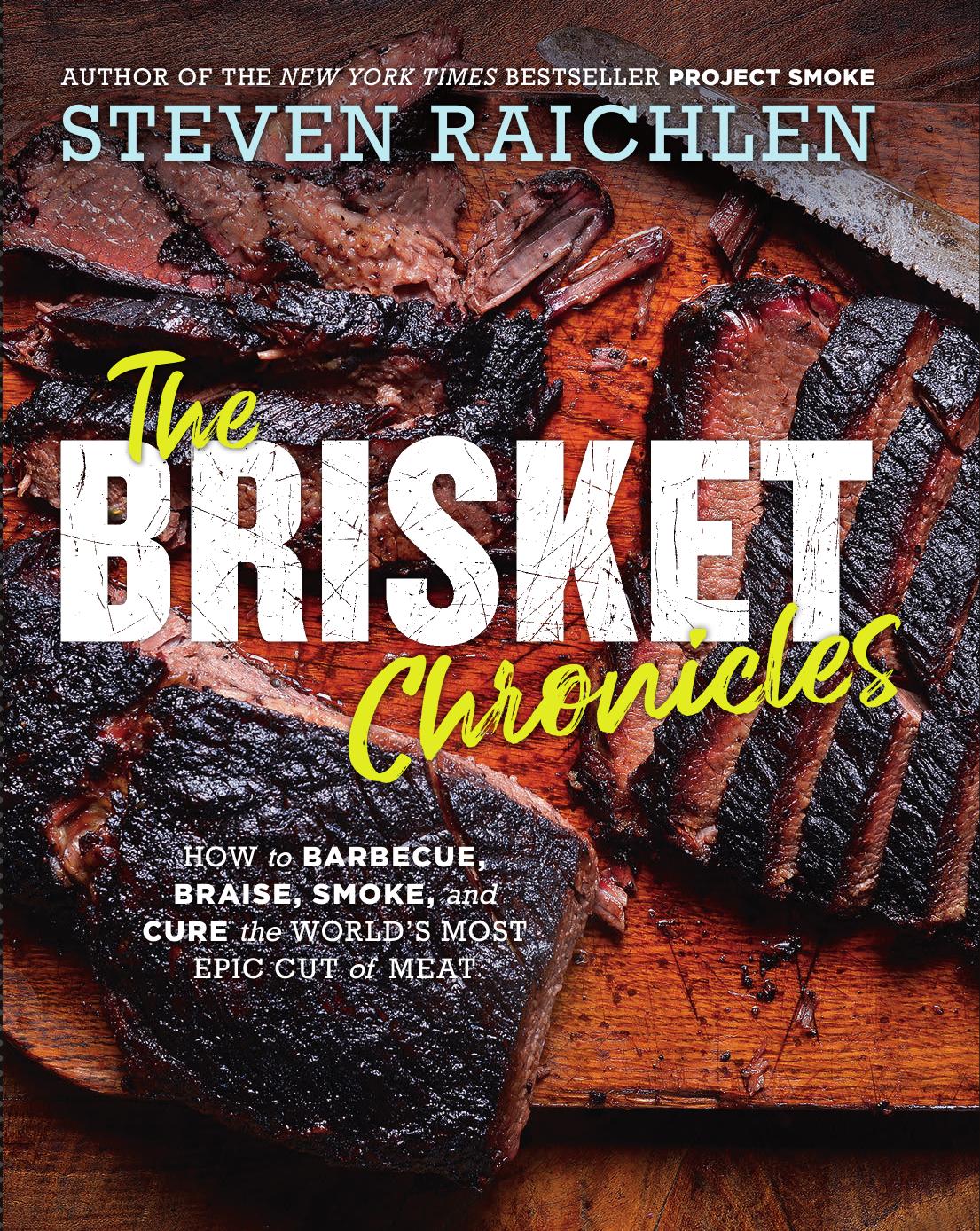The Brisket Chronicles by Steven Raichlen

Author:Steven Raichlen
Language: eng
Format: epub, pdf
Publisher: Workman Publishing Company
Published: 2019-04-17T21:17:05+00:00
Combine the ingredients in a mixing bowl and stir to mix. Pickling Spice will keep, in a sealed jar at room temperature away from heat and light, for at least 2 months.
CORNED BEEF through the ages
Attman’s Deli on Lombard Street in Baltimore, where I grew up, may not serve the best corned beef in America. But if someone else does it better, I’ve yet to find it. Attman’s simmers its cured beef briskets in waist-high cauldrons, much as it did when the restaurant opened in 1915. They slice it so thin that you can almost read through it, and they pile it so high on rye bread that your jaws will ache from opening wide enough to take a bite.
Lombard Street was Baltimore’s answer to Delancey Street in New York, and in my grandfather’s day, you could get world-class corned beef from a half-dozen delis and meat markets there. Today, most deli corned beef comes from giant factories, and while it’s reasonably tasty, you’d never mistake it for Attman’s. Or for Katz’s Deli in Manhattan, or Manny’s in Chicago, or Langer’s in LA.
Corned beef? Delicatessen? Wait: Didn’t corned beef come from Ireland? Isn’t corned beef what you eat on St. Patrick’s Day—whether you’re Irish American or not? So how did it get from the Emerald Isle to the New York–style delicatessen?
In the beginning, the Irish raised cattle mostly as draft and dairy animals. What little meat people ate came primarily from pigs and sheep. That changed when the English conquered Ireland in the twelfth century. To sate England’s appetite for beef, English landlords established huge cattle farms in Ireland (displacing Irish farmers in the process). By the 1800s, Ireland was exporting tens of thousands of cattle to England each year.
That all changed with the Cattle Acts of 1663 and 1667, explains Shaylyn Esposito in a fascinating Smithsonian.com article titled “Is Corned Beef Really Irish?” Promulgated to protect the English beef industry, these acts forbade the export of live Irish cattle to England. Irish beef prices plummeted, forcing the nation’s meat merchants to salt their surplus inventory to keep it from spoiling.
The first reference to corned beef appears in a twelfth-century comic poem called Aislinge Meic Con Glinne (The Vision of Mac Conglinne). Back then, beef was cured with sea ash (burned seaweed) instead of salt. In the age before refrigeration (make that most of human history), “corning” (salt curing) was the most effective way to preserve meat. Butchers used coarse rock salt, whose large grains were the size and shape of barley corns. These “corns of salt” gave rise to the name corned beef.
Thanks to Eire’s abundant beef and low salt tax (10 percent of England’s at the time), Irish corned beef became big business. It fed the sailors in the Royal Navy, foot soldiers in Wellington’s army, and armies of slaves on Caribbean plantations. It was exported to Colonial America and to British outposts throughout India, Africa, and Asia. It even went to England’s archenemy, France. Dublin, Cork, and Belfast grew rich on a corned beef industry that literally fed the world.
Download
This site does not store any files on its server. We only index and link to content provided by other sites. Please contact the content providers to delete copyright contents if any and email us, we'll remove relevant links or contents immediately.
The Sprouting Book by Ann Wigmore(3543)
Better Homes and Gardens New Cookbook by Better Homes & Gardens(3523)
Trullo by Tim Siadatan(3378)
Super Food Family Classics by Jamie Oliver(3366)
Hedgerow by John Wright(3273)
Panini by Carlo Middione(3248)
Bread Revolution by Peter Reinhart(3080)
Sauces by James Peterson(3048)
Jam by Jam (epub)(3020)
Ottolenghi - The Cookbook by Yotam Ottolenghi(2869)
Oh She Glows Every Day by Angela Liddon(2726)
My Pantry by Alice Waters(2542)
Hot Sauce Nation by Denver Nicks(2450)
The Culinary Herbal by Susan Belsinger(2429)
Veg by Jamie Oliver(2408)
Wanderlust by Jeff Krasno(2225)
Meathooked by Marta Zaraska(2220)
The Art of Making Gelato by Morgan Morano(2215)
Basic Illustrated Edible and Medicinal Mushrooms by Jim Meuninck(2185)
